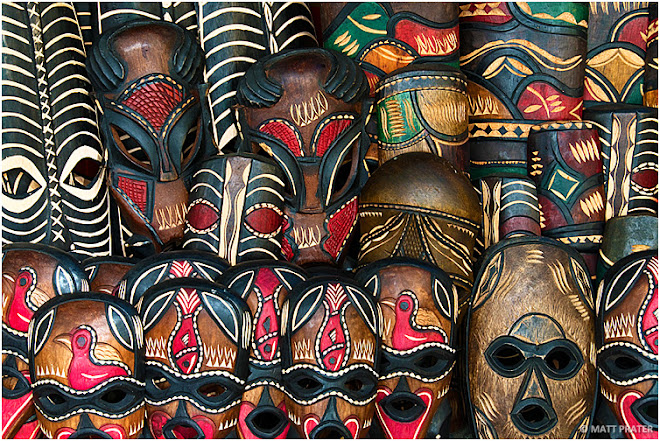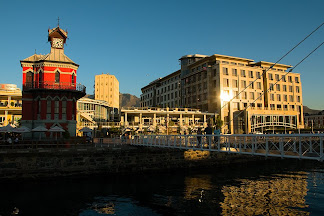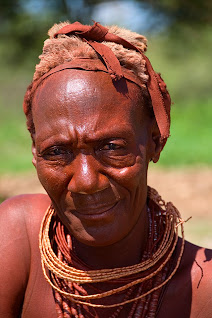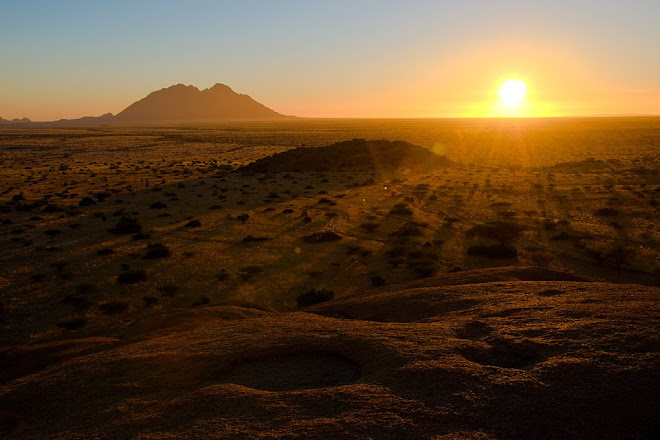Day 86: Stellenbosch, South Africa
Thursday night in Sesriem, Namibia was a cold and windy one – all night, sand blew in through the canvas of the tent, and I tucked my head inside my sleeping bag for shelter. Friday morning we got off to an early start, leaving at 6:00 for one of the largest canyons in the world, Fish River Canyon in the far south of Namibia. It took us over ten hours on dusty roads to reach the canyon, stopping briefly in the tiny town of Helmeringhausen and again for lunch on the side of the road. It was such a long drive day that we only had about an hour at the canyon before sunset, so we did a short hike along the rim. We were prepared for our last bush camp of the trip, but Carol surprised us, and we instead pulled into a nice campsite called Cañon Roadhouse. Needless to say, we were a bit too excited, given that we were still sleeping in tents! There was a great restaurant at the campsite that was designed like an old western American roadside diner, except with German instead of American vintage memorabilia. The food was not American diner food either, but it was fantastic – I had butternut soup, chicken schnitzel with pineapple sauce, and pavlova for dessert.
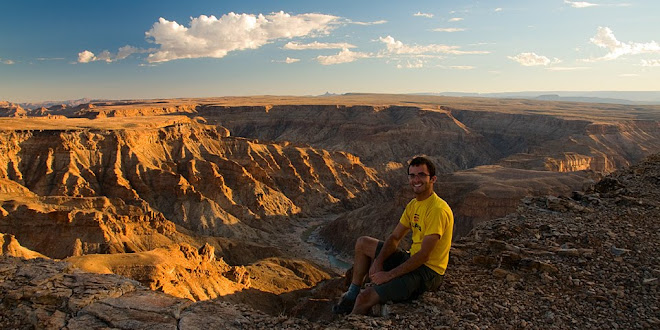
Sitting on the edge of Fish River Canyon, Namibia

Fish River Canyon, Namibia
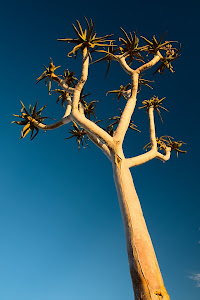
A quiver tree, or kokerboom (Aloe dichotoma), at Fish River Canyon, Namibia
We suffered yet another chilly night, but awoke Saturday excited as children on Christmas morning: we were finally crossing the border into South Africa today! It was our final destination, and those of us on the Oasis truck since the very beginning – Tom, Jude, Beth, and myself – had been anticipating it for ten weeks. It took us three hours to get there, and we were greeted by a proper border crossing that had actual printed signs and even x-ray machines. Granted, they don't always x-ray bags at the border, but South Africa is stepping up security because of the upcoming World Cup. An hour later, we were finally in South Africa and on our way through the vast Northern Cape province toward Cape Town. We stopped in the town of Springbok for lunch at KFC and arrived at the Highlanders campsite near Trawal at 6:30. We set up our tents for the last time on a beautiful flat patch of soft grass, and then we made our way to the bar for dinner and wine tasting. South Africa is internationally famous for its wines that are produced around the Cape region, and it was fitting to be introduced to some of it on our very first night in the country. We tasted two whites, two reds, a rosé, a sparkling wine, and a specialty of Highlanders, their African Ruby Vermouth. My favorite was the Pinotage, a red wine unique to South Africa. It is a special cross between Pinot noir and Hermitage (Cinsaut) grapes that was specifically bred to thrive in African soil.

Vineyard in the Western Cape, South Africa
Sunday we drove past postcard-beautiful vineyards nestled against craggy mountains as we made our way to Stellenbosch, a university town in the Cape Winelands that is the epicenter of the South African wine industry. We arrived in the early afternoon, which gave us enough time to stroll the streets of this picturesque little town brimming with Cape Dutch style architecture. We ate lunch at Mugg & Bean, a South African restaurant chain influenced by American coffee shops. We sat outside and enjoyed the crisp autumn weather while we ate – the atmosphere is reminiscent of a New England college town, except the students here speak mostly Afrikaans. In fact, the University of Stellenbosch is one of the last universities left in South Africa that offers a curriculum in Afrikaans.
Yesterday a group of us left mid-morning for an extended wine tasting tour around the region, visiting four wineries. Our first stop was Simonsig, where we started our tour by visiting the wine production facilities and learning how different types of wine are made. We then made our way to an outside patio area where we tasted five wines produced at Simonsig. With each wine, the glass was filled about one to two finger widths. Spitting is rude – that would be a waste of good wine!
The next winery was Fairview, where I tried six wines. This time, there were a few separate wine bars where you could make your own selections. The best part about Fairview was the fantastic cheese bar, which I visited a couple of times in between my wine tasting.
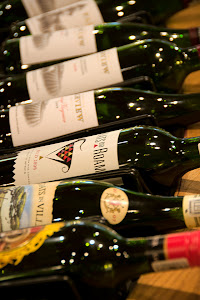
Wine bottles at Fairview wine & cheese estate, Stellenbosh, South Africa

Wine production equipment at Fairview wine & cheese estate, Stellenbosh, South Africa
After eleven wines in the morning, I was feeling good, and it was off to the charming town of Franschhoek for lunch. I enjoyed bobotie – a popular South African minced meat curry dish originating from the Dutch East India Company colonies in Indonesia – and a glass of red wine, of course. After lunch we visited two more wineries – Dieu Donné and Boschendal – where I tasted another eleven wines. After tasting 23 wines today – drinking the equivalent of one and a half bottles – I slept most of the way back to Stellenbosch, where we were dropped off at our appropriately named hostel, Stumble Inn. Even though I drank a lot more than I'm used to, I didn't feel too drunk since the wine tasting was spread out over the course of the day.

The Cape Dutch style manor house, built in 1812, at Boschendal wine estate near Franschhoek, South Africa

Smoking a Cuban cigar at Cubana in Stellenbosch, South Africa
I took a break at the hostel for a little while, and then Tom, Jude, and a few others convinced me to go bar hopping. After a couple of drinks, we made our way to a trendy-looking Cuban joint called Cubana, where I couldn't pass up the opportunity to try a genuine Cuban cigar, which is illegal in the United States due to the embargo against Cuba. I knew it would be disgusting, but if I was ever going to try a cigar, I figured it should be a Cuban. I never really got the hang of the technique for smoking it, and soon we ordered a shisha, also known as a hooka. This is a Middle Eastern water pipe where the smoke from flavored tobacco is filtered through water and smoked through an attached hose. I tried smoking a shisha for the first time in Egypt and thought it was smooth and actually enjoyable, unlike cigarettes or cigars.
After Cubana, we ordered take-away from KFC and ate at an upper-level patio at another bar, where we enjoyed a few more drinks. As the evening wore on, the music pumping from a club below began to get louder as the place packed full of Afrikaner university students. Inside, seizure-inducing strobe lights illuminated the dancing crowd in stop-motion flashes. I stayed at the club until about four in the morning, when it was still packed with people. I didn't drink in those last few hours, and I must have sobered up before going to bed. Miraculously, I don't have a hangover this morning. I don't think I've ever before consumed as much alcohol in one day as I did yesterday, but it was a blast. Being one of the last days with the fantastic friends I've made on this adventure with Oasis, it's a day I'll never forget.



